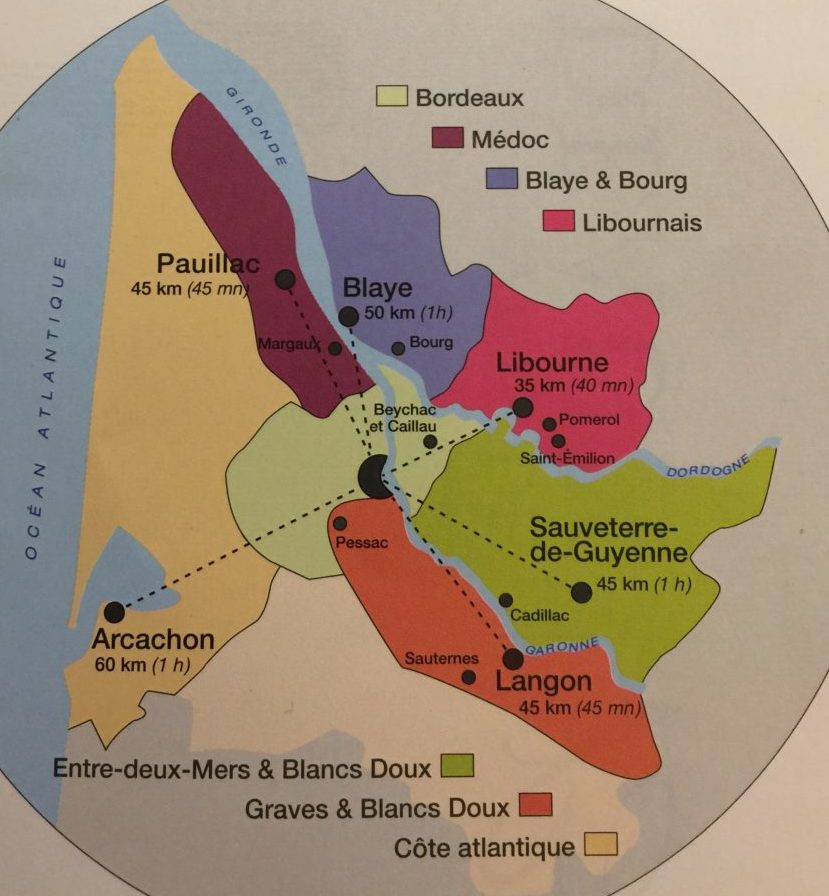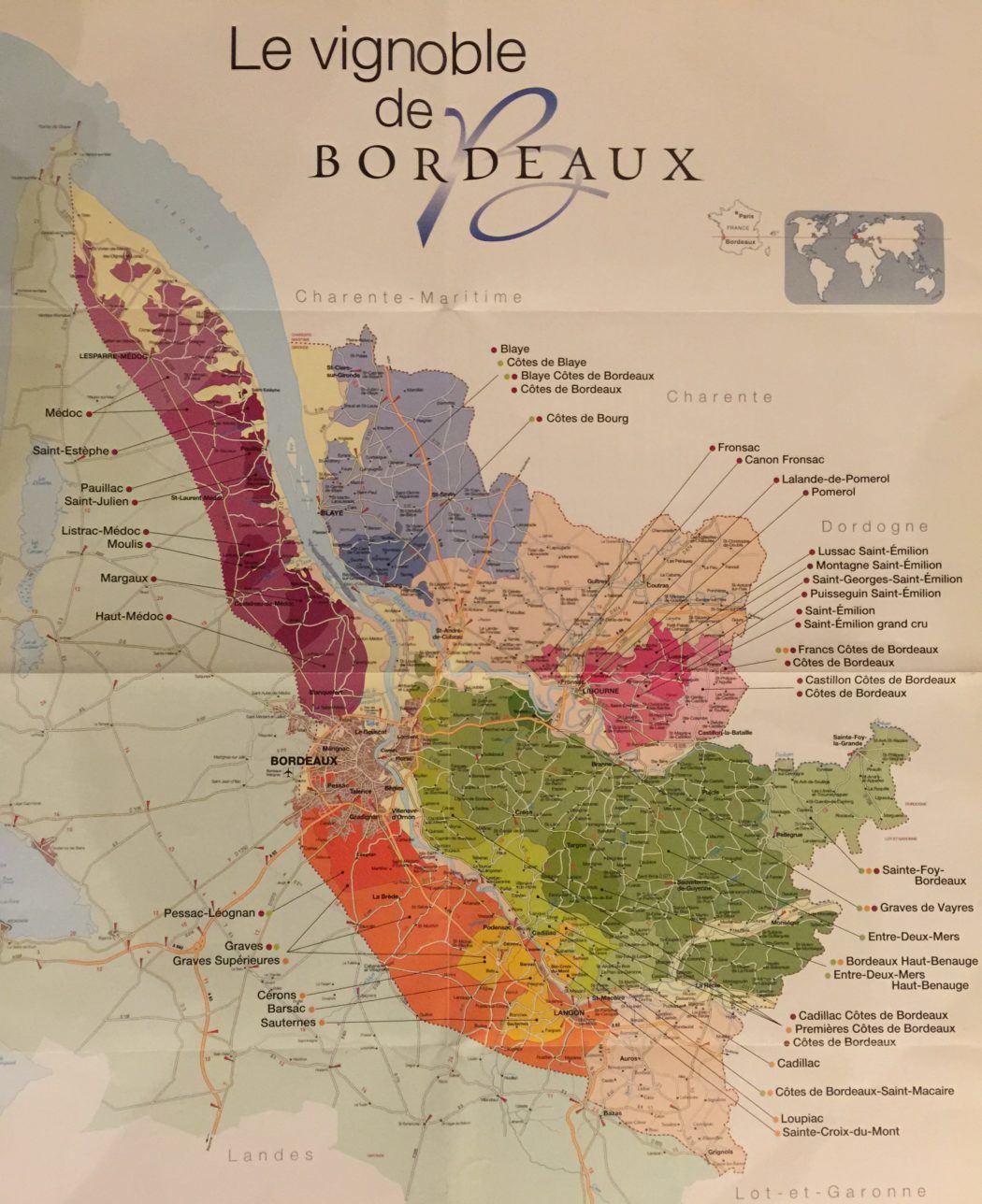You are cruising north of the city of Bordeaux into the Gironde Estuary. An estuary is a bay with a high content of fresh water. In this case, the fresh water is provided by the Garonne River coming north from the Pyrenees, and the Dordogne flowing west from Central France. They join forces just north of the City of Bordeaux and create the Gironde Estuary which looks like a gash in the Atlantic Coast of France.
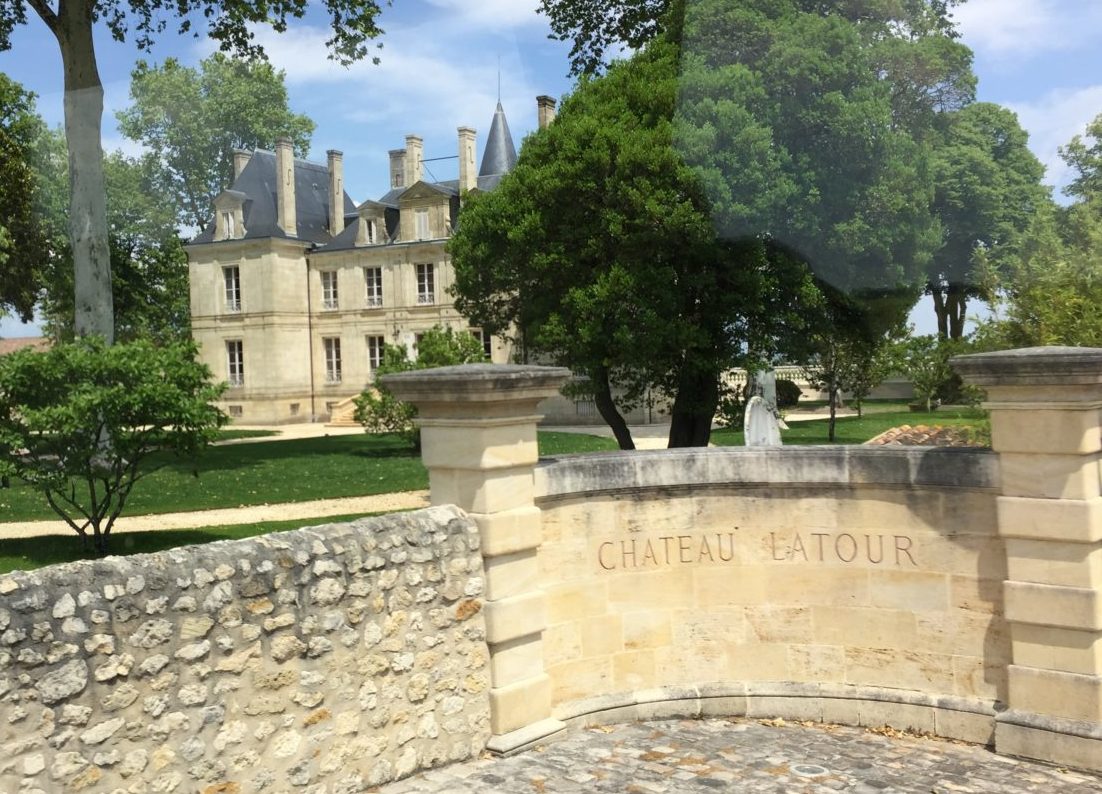
As we mentioned in the introductory article, there has been a lot of French history taking place in the area. However, the vineyards of Bordeaux seem to have missed most of the martial conflicts. Greeks brought wine to Provence. Romans brought wine to Bordeaux. The Gauls created the first great leap forward when they started to prune plants. This improved vine productivity and eased the manual labor of picking fruit.
British demand followed the marriage of Henri II and Eleanor of Aquitaine, particularly under their son, King John, fueling a healthy growth of production. The Dutch drained some sections of the Estuary near Medoc and more capacity was added.
The biggest threat has been the devastating attacks of the phylloxera insects. The industry was saved in the late 1800’s by grafting vines unto stock brought back to the Old World from Missouri, of all places. Can anyone name a famous wine from Missouri?
To prepare yourself for this trip, you may wish to start your subscription to Wine Spectator now. And, you may wish to pick up the The Wine Bible
, or maybe Wine Folly: Magnum Edition: The Master Guide
.
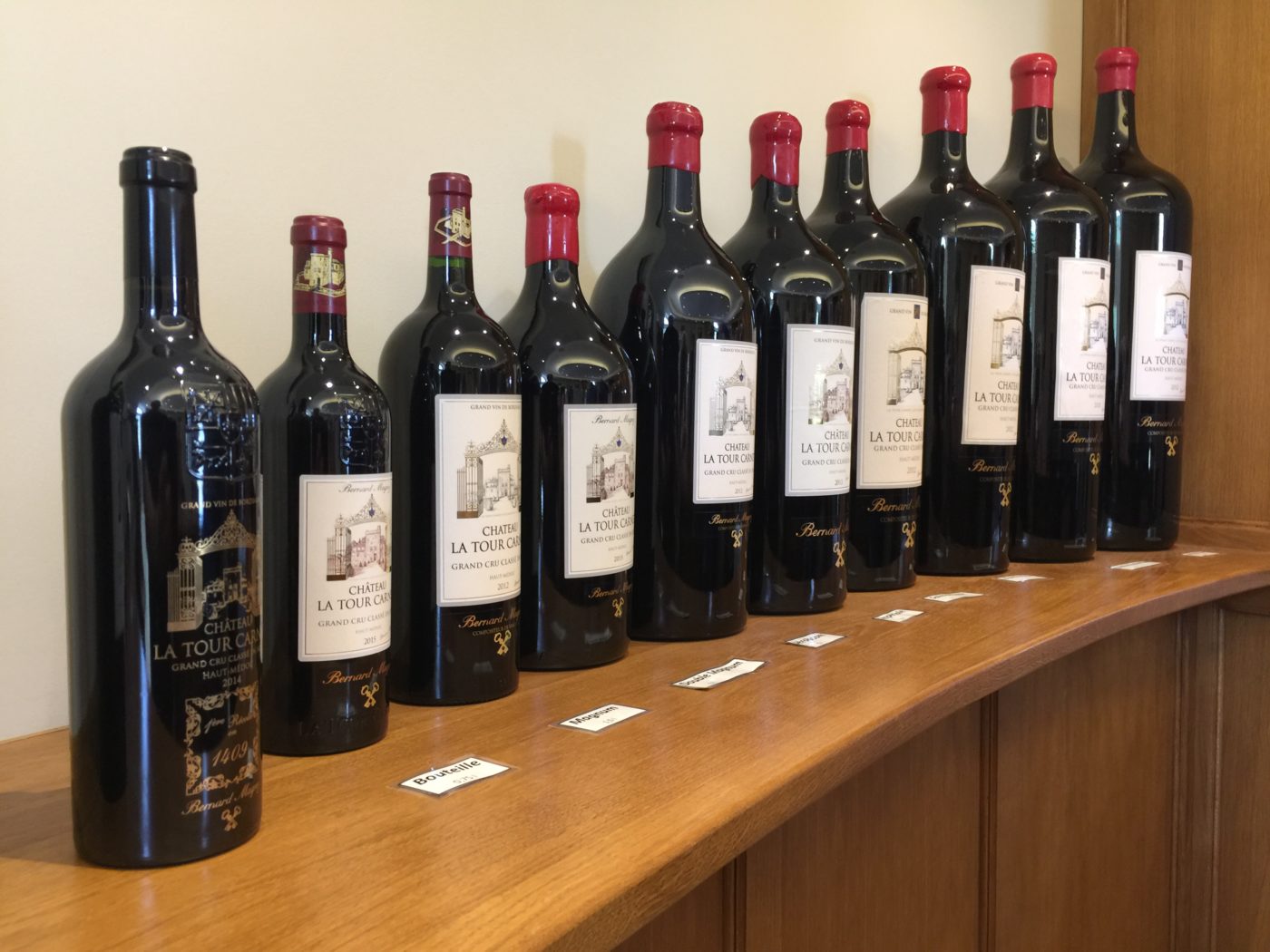
There are 54 “appellations d’origine controllee” (AOC, or protected places of origin), in the Bordeaux wine region. Think of them as tiny fiefdoms of branded vineyards. The French government has an agency dedicated to maintaining the integrity and quality of these discrete territories.
What’s the big deal? Here’s the deal: wine reflects the ground from which it is grown. It also reflects the climate and the wine-maker’s touch. However, the ground, or the French word, “terroir”, is like a fingerprint for the wines of every vineyard. The French want to be sure that if you buy a wine labelled “Pauillac”, then you’d better be getting wine made in the Pauillac AOC.
Geographically, this is a large peninsula sandwiched between a river delta for two major rivers and the Atlantic Ocean. The soils are sandy and gravelly. For wine, the more gravel, the better. It makes the vines work harder to find nourishment which, for some inexplicable reason, makes for better wine.
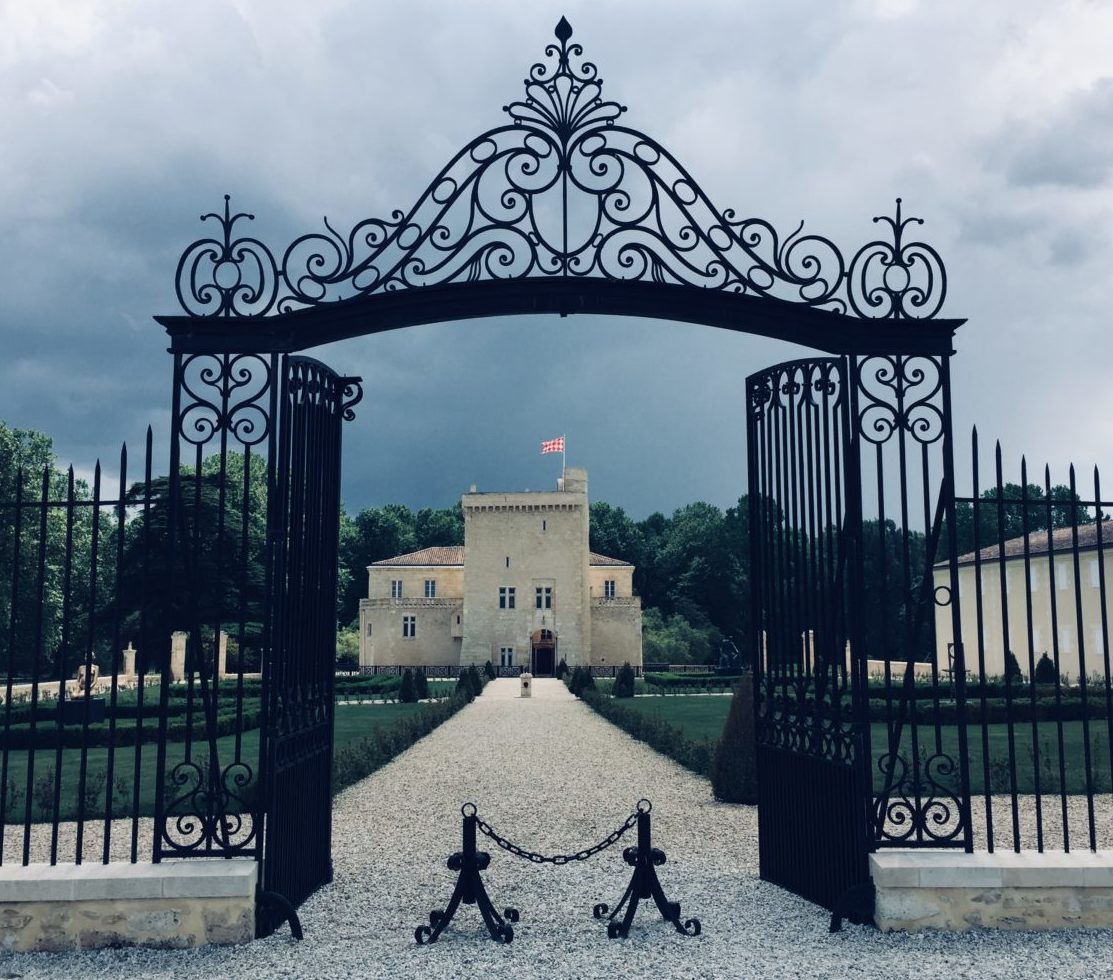
The best way to experience the nuance of terroir is to do a very focused wine tasting. Pick a wine region, like Margaux. Get three bottles of the same vintage year from different vineyards. For one or more of the vineyards, get three consecutive, or close, vintage years. After sipping these several worthy representatives of Margaux wine, you will be able to taste the difference between vineyards without looking at the labels. It’s fun and fascinating and a great party.
There’s a lot to know about Bordeaux wines and vineyards. You can start here: The Complete Bordeaux. For those of you who like gross simplifications, the Bordeaux wine region looks like this:
For our purposes, we will focus on the Haut-Medoc, (dark brown), St. Emilion, (bright red), and Sauternes, (orange), AOC’s, because a) that’s where the heavy hitters are, and b) that’s where your cruise will go.
The Medoc region is the “Left Bank”, as seen by birds and angels, or the west bank of the Estuary. The region includes both Medoc and Haut-Medoc AOC’s. The official explanation for the term “Haut-Medoc”, which means the “High Medoc” or “Upper Medoc”, is that it is upriver from the Medoc AOC. In other words, if you were to enter the estuary from the Atlantic in a boat and sail upriver, you would encounter Medoc first, and Haut-Medoc further upriver.
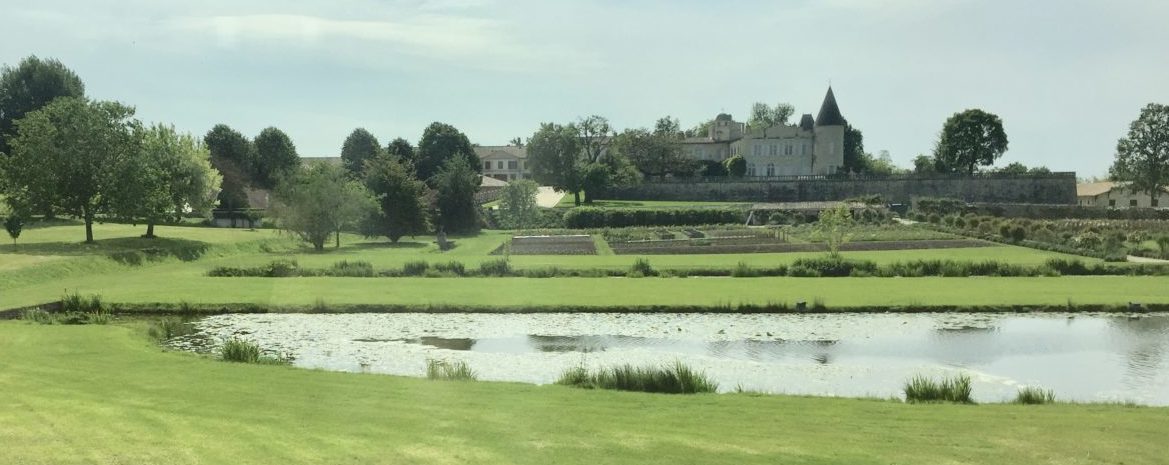
I don’t buy it. I think the term, “Haut-Medoc” is a subtle marketing ploy to get you to believe that these are the “Better Medoc” AOC’s. The mini-regions of St-Estephe, Pauillac, St-Julien, and Margaux have some of the most famous names in the business. Pauillac, alone has three of the most recognizable wine brands in the world, including Latour, Lafite-Rothschild, and Mouton-Rothschild. Here’s your primer: Bordeaux: Left Bank (Guides to Wines and Top Vineyards)
In 1855, Napoleon III established the “Grand Crus Classes for Medoc and Sauternes”. He wanted to create a marketing brand for his good wines. The 57 red wine and 21 white wine vineyards that were selected have been touting this ever since. They represent the original “Good ‘Ole Boys Club” of French Wine. They have lobbied to prevent many changes to their ranks ever since. All the Grand Cru Classes red wines are Haut-Medoc wines.
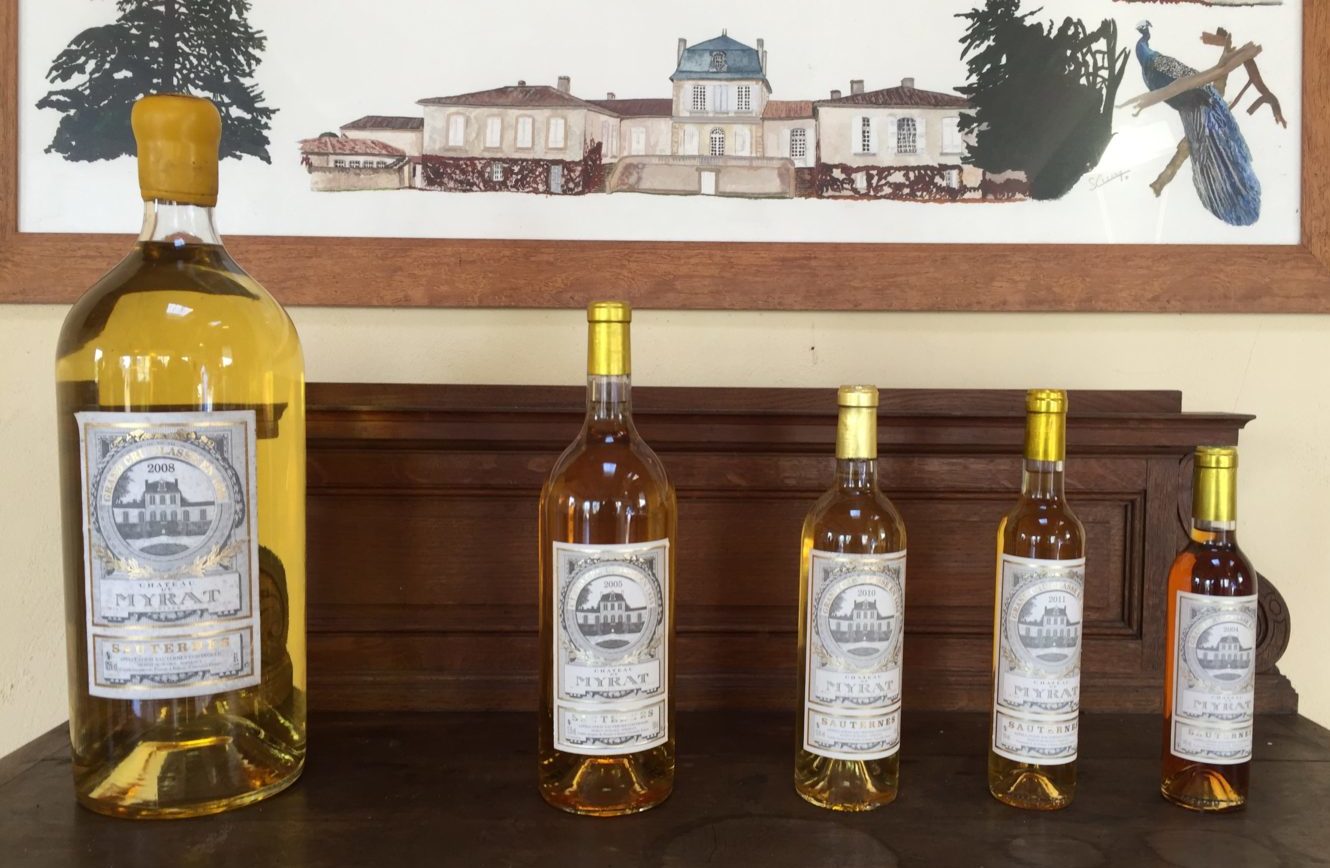
As you cruise south past Margaux, you enter the Garonne River. Once you are beyond the city of Bordeaux, you have the Graves AOCs on your right (west) and the “Entre Deux Mers” AOC’s on your left, (east). Though the French word, “mer”, means “sea”, the phrase “Between two seas” refers to the two rivers, Garonne and Dordogne.
The pride of Graves are its Sauternes, which are sweet white wines. The unseated champion of this AOC is Chateau d’Yquem, (pronounced “shah-toh dee kem”). Thomas Jefferson was a fan. He reports that George Washington tasted Chateau d’Yquem and promptly ordered 30 cases for Mt. Vernon. At a recent dinner here in Seattle, I had the occasion to order a 100 point d’Yquem. All I can say is, “Wow!”
The only white wines included in the 1855 Grand Cru Classee are from Sauternes and its neighbor Barsac. Their sweetness does limit their scope for pairing with different foods. They are usually seen in the company of pates, certain cheeses, and a lot of desserts. Here’s your guide: Sauternes and Other Sweet Wines of Bordeaux (Classic Wine Library).
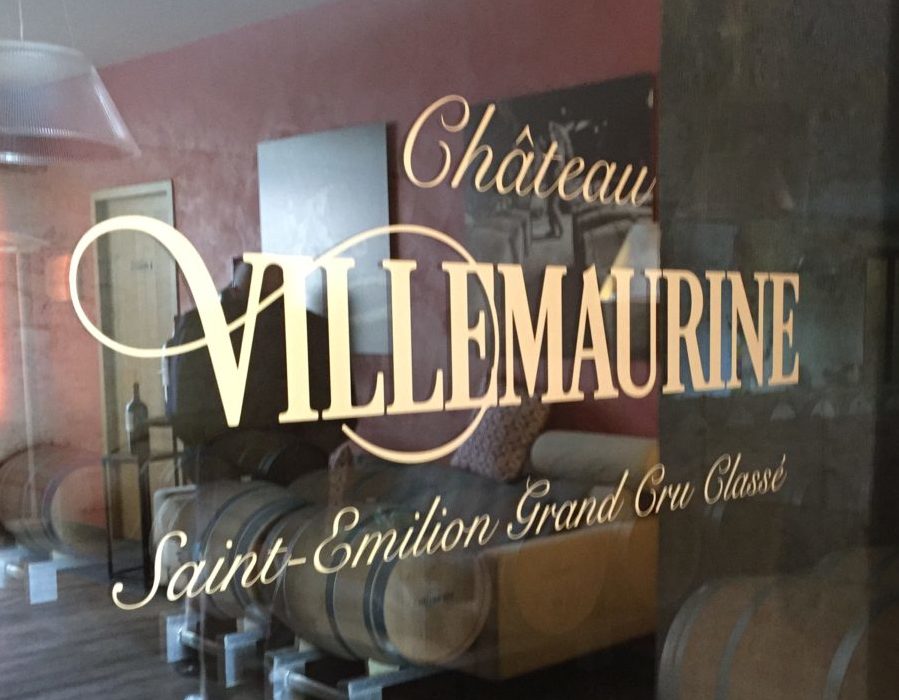
If you had turned east at Margaux, you would have entered the Dordogne River. This area is considered the “Right Bank” of the Bordeaux region, home to the other powerhouse AOC, St. Emilion, and its smaller, though equally distinguished sibling, Pomerol. I love these wines: Saint-Émilion: The Châteaux, Winemakers, and Landscapes of Bordeaux’s Famed Wine Region
Like Haut-Medoc, this is red wine country. The difference is that Haut-Medoc wines feature Cabernet Sauvignon grapes, blended with other varietals, while St. Emilion wines feature Merlot grapes, blended with other varietals. In general, Left Bank “Cabs” have a stronger taste that goes well with a hearty steak. Right Bank St. Emilion is perfect with dark meat birds like turkey, roast duck, and even pizza. For tips on wine pairings: Tasting Wine and Cheese: An Insider’s Guide to Mastering the Principles of Pairing, or perhaps What to Drink with What You Eat: The Definitive Guide to Pairing Food with Wine, Beer, Spirits, Coffee, Tea – Even Water – Based on Expert Advice from America’s Best Sommeliers
.
So, Pomerol or Pauillac? The only way to figure that out for yourself is to taste, taste, and taste some more. Tasting several wines at one session will help you distinguish the brands you prefer. You will have your preferences. The wines are all different and so are the wine drinkers. You can trust “points” and price only so far when it comes to the wines that truly sing on your own tongue. Don’t worry about what other people say, drink the wines you like and drink the best wines you can afford.
For those of you who prefer a map with more detail, here you go:

